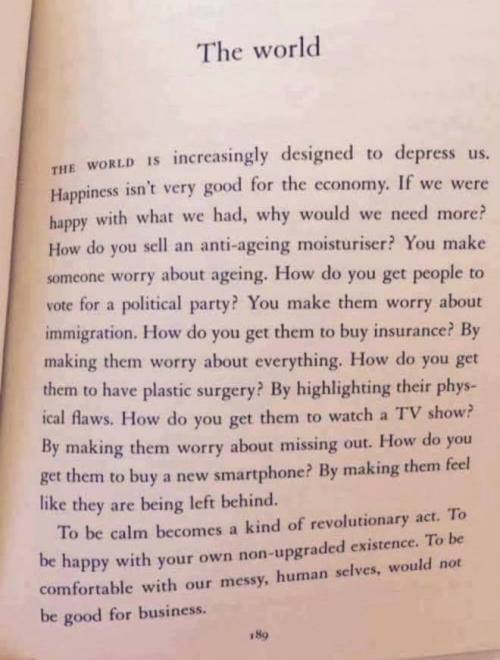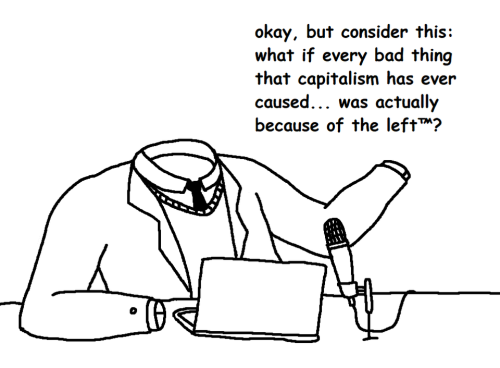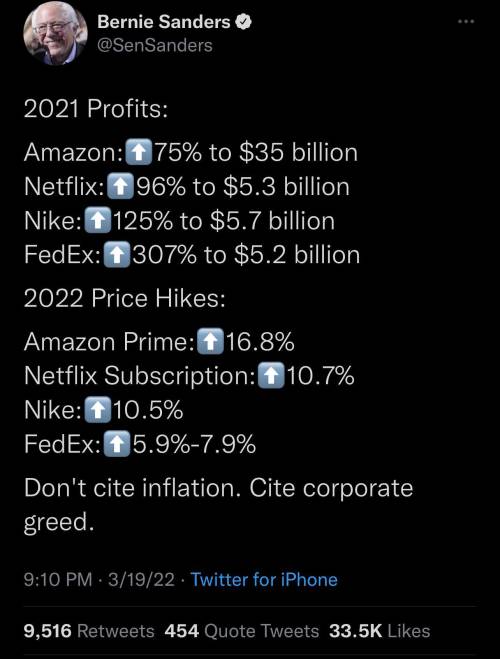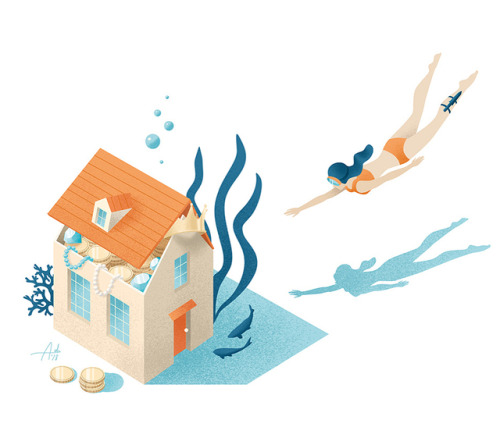#economy
THE ECONOMIC IMPERATIVE FOR INVESTING IN ARTS AND CULTURE
“We have to stop thinking about arts and culture as simply nice-to-haves. They are just as important as well-maintained roads and bridges. By giving us the chance to stimulate our minds with new ideas and experiences, they give us the opportunity to become more creative. Arts and culture are infrastructure for the mind.”
Read:The economic imperative for investing in arts and culture
Post link

The Punjab & Sind Bank Ltd advertising from 1977
#NinaTurner #NinaTurnerForCongress #CancelAllStudentLoanDebt
#JoeBiden #BidenAdministration #JoeBidenRecord #JoeBidensRecord #Bankruptcy #Students #StudentDebt #StudentLoan #StudentLoanDebt #StudentLoans #StudentLoanForgiveness #StudentLoanDebtForgiveness #FreeCollege #FreeTradeSchools #CollegeForaAll #Economy #Economics
https://www.instagram.com/p/CchFhl1sjmd/?igshid=NGJjMDIxMWI=
Post link

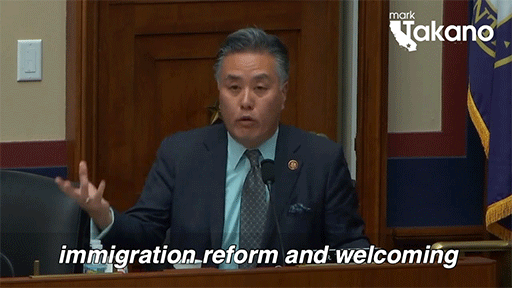

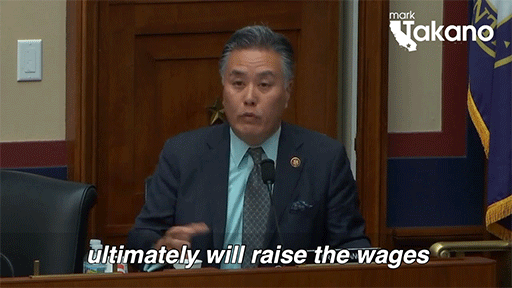

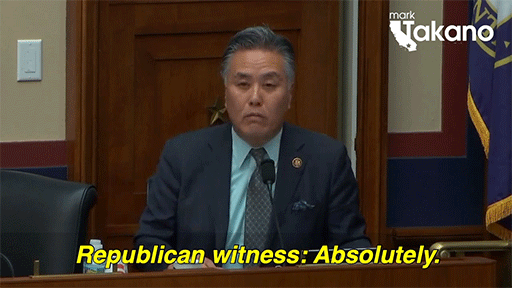
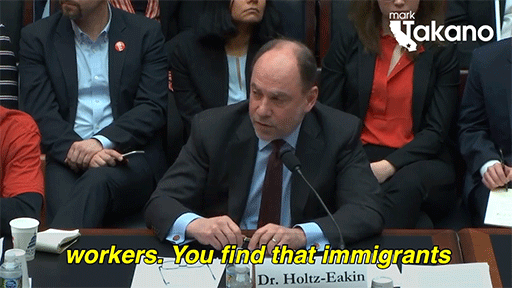
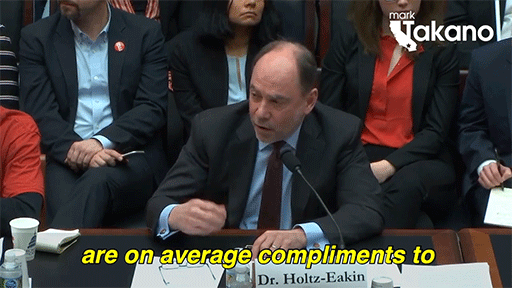
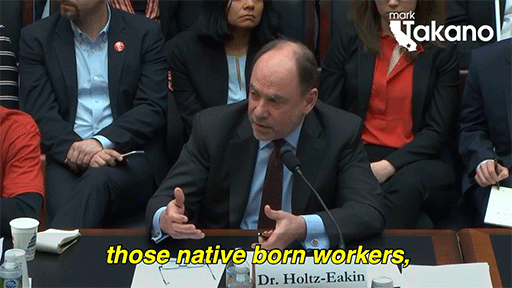

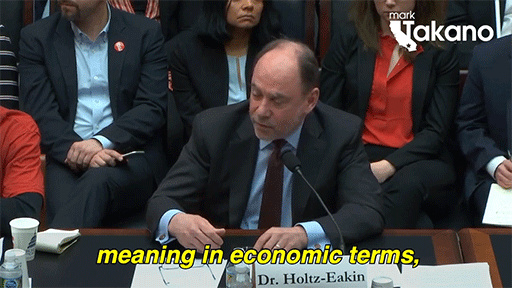
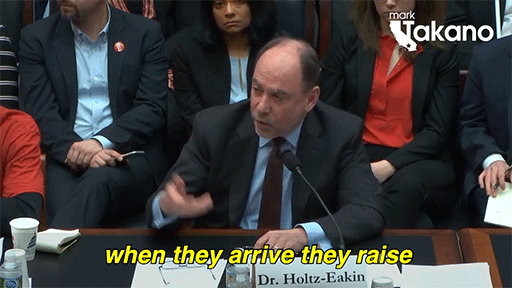
Watch a Republican witness debunk the GOP myth that immigration has a negative effect on American workers and our economy. Video.
The January jobs report from the Labor Department is heightening fears that a so-called “tight” labor market is fueling inflation, and therefore the Fed must put on the brakes by raising interest rates.
This line of reasoning is totally wrong.
Among the biggest job gains in January were workers who are normally temporary and paid low wages (leisure and hospitality, retail, transport and warehousing). This January employers cut fewer of these low-wage temp workers than in most years, because of rising customer demand and the difficulties of hiring during Omicron. Due to the Bureau of Labor Statistics’s “seasonal adjustment,” cutting fewer workers than usual for this time of year appears as “adding lots of jobs.”
Fed policymakers are poised to raise interest rates at their March meeting and then continue raising them, in order to slow the economy. They fear that a labor shortage is pushing up wages, which in turn are pushing up prices — and that this wage-price spiral could get out of control.
It’s a huge mistake. Higher interest rates will harm millions of workers who will be involuntarily drafted into the inflation fight by losing jobs or long-overdue pay raises. There’s no “labor shortage” pushing up wages. There’s a shortage of good jobs paying adequate wages to support working families. Raising interest rates will worsen this shortage.
There’s no “wage-price spiral,” either (even though Fed chief Jerome Powell has expressed concern about wage hikes pushing up prices). To the contrary, workers’ real wages have dropped because of inflation. Even though overall wages have climbed, they’ve failed to keep up with price increases – making most workers worse off in terms of the purchasing power of their dollars.
Wage-price spirals used to be a problem. Remember when John F. Kennedy “jawboned” steel executives and the United Steel Workers to keep a lid on wages and prices? But such spirals are no longer a problem. That’s because the typical worker today has little or no bargaining power.
Only 6 percent of private-sector workers are now unionized. A half-century ago, more than a third were. Today, corporations can increase output by outsourcing just about anything anywhere because capital is global. A half-century ago, corporations needing more output had to bargain with their own workers to get it.
These changes have shifted power from labor to capital — increasing the share of the economic pie going to profits and shrinking the share going to wages. This power shift ended wage-price spirals.
******
Btw, if you’d like my daily analyses, commentary, and drawings, please subscribe to my free newsletter: robertreich.substack.com
******
Slowing the economy won’t remedy either of the two real causes of today’s inflation – continuing worldwide bottlenecks in the supply of goods, and the ease with which big corporations (with record profits) are passing these costs to customers in higher prices.
Supply bottlenecks are all around us. (Just take a look at all the ships with billions of dollars of cargo idling outside the Ports of Los Angeles and Long Beach, through which 40 percent of all U.S. seaborne importsflow.)
Big corporations have no incentive to absorb the rising costs of such supplies — even with profit margins at their highest level in 70 years. They have enough market power to pass these costs on to consumers, sometimes using inflation to justify even bigger price hikes. “A little bit of inflation is always good in our business,” the CEO of Kroger said last June. “What we are very good at is pricing,” the CEO of Colgate-Palmolive added in October.
In fact, the Fed’s plan to slow the economy is the oppositeof what’s needed now or in the foreseeable future. COVID is still with us. Even in its wake, we’ll be dealing with its damaging consequences for years — everything from long-term COVID, to school children months or years behind.
The January jobs report shows that the U.S. economy is still 2.9 million jobs below what it had in February 2020. Given the growth of the US population, it’s 4.5 million short of what it would have by now had there been no pandemic.
Consumers are almost tapped out. Not only are real (inflation-adjusted) incomes down, but pandemic assistance has ended. Extra jobless benefits are gone. Child tax credits have expired. Rent moratoriums are over. Small wonder consumer spending fell 0.6 percent in December, the first decrease since last February.
Many people are understandably gloomy about the future. The University of Michigan consumer sentiment survey plummeted in January to its lowest level since late 2011, back when the economy was trying to recover from the global financial crisis. The Conference Board’s index of confidence also dropped in January.
Given all this, the last thing average working people need is for the Fed to raise interest rates and slow the economy further. The problem most people face isn’t inflation. It’s a lack of good jobs.
Friday’s jobs report from the Department of Labor was a warning sign about the US economy. It should cause widespread concern about the Fed’s plans to raise interest rates to control inflation. And it should cause policymakers to rethink ending government supports such as extended unemployment insurance and the child tax credit. These will soon be needed to keep millions of families afloat.
Employers added only 199,000 jobs in December. That’s the fewest new jobs added in any month last year. In November, employers added 249,000. The average for 2021 was 537,000 jobs per month. Note also that the December survey was done in mid-December, before the latest surge in the Omicron variant of Covid caused millions of people to stay home.
But the Fed is focused on the fact that average hourly wages climbed 4.7% over the year. Central bankers believe those wage increases have been pushing up prices. They also believe the US is nearing “full employment” – the maximum rate of employment possible without igniting even more inflation.
As a result, the Fed is about to prescribe the wrong medicine. It’s going to raise interest rates to slow the economy – even though millions of former workers have yet to return to the job market and even though job growth is slowing sharply. Higher interest rates will cause more job losses. Slowing the economy will make it harder for workers to get real wage increases. And it will put millions of Americans at risk.
The Fed has it backwards. Wage increases have not caused prices to rise. Price increases have caused real wages (what wages can actually purchase) to fall. Prices are increasing at the rate of 6.8% annually but wages are growing only between 3-4%.
The most important cause of inflation is corporate power to raise prices.
Yes, supply bottlenecks have caused the costs of some components and materials to rise. But large corporations have been using these rising costs to justify increasing their own prices when there’s no reason for them to do so.
Corporate profits are at a record high. If corporations faced tough competition, they would not pass those wage increases on to customers in the form of higher prices. They’d absorb them and cut their profits.
But they don’t have to do this because most industries are now oligopolies composed of a handful of major producers that coordinate price increases.
Yes, employers have felt compelled to raise nominal wages to keep and attract workers. But that’s only because employers cannot find and keep workers at the lower nominal wages they’d been offering. They would have no problem finding and retaining workers if they raised wages in real terms – that is, over the rate of inflation they themselves are creating.
Astonishingly, some lawmakers and economists continue to worry that the government is contributing to inflation by providing too much help to working people. A few, including some Democrats like Joe Manchin and Kyrsten Sinema, are unwilling to support Biden’s Build Back Better package because they fear additional government spending will fuel inflation.
Here again, the reality is exactly the opposite. The economy is in imminent danger of slowing, as the December job numbers (collected before the Omicron surge) reveal.
Many Americans will soon need additional help since they can no longer count on extra unemployment benefits, stimulus payments or additional child tax credits. This is hardly the time to put on the fiscal brakes.
Policymakers at the Fed and in Congress continue to disregard the elephant in the room: the power of large corporations to raise prices. As a result, they’re on the way to hurting the people who have been taking it on the chin for decades – average working people.
RR
For daily essays, drawings, and discussion, please join me at www.robertreich.substack.com.
The Horrible Aftermath of the SHEIN-pocalypse (Salem Tovar)
Burnout: The truth about overwork and what we can do about it (DW Documentary)
Fast fashion and crochet
While we’re on the topic of crochet:
Please know that, unlike knitting, crochet cannot be manufactured by machines. This has a few consequences.
Labour exploitation:
Labour exploitation is rampant in the fast fashion industry: without it, the industry simply would not exist.
This means that if you see a genuine crocheted piece in a fast fashion shop, it was made by hand by someone who was paid peanuts for their labour, if paid at all.
Fibre crafts are very labour-intensive. This is why crocheted/hand-knitted items by indie designers are priced the way they are: you’re notjust paying forthe materials. You’re also paying for the hours that were needed to design and make the item. Even if the designer were to price those hours at minimum wage, they still add up.
Fast fashion strives to manufacture items as cheaply as possible. A lot of different things make up the final priceyou pay at a shop, such as design, materials, shipping, packaging, marketing,… Labouris only a fraction of that price, and garment workers rarely get paid a living wage as to keep the prices down.
Take this seven part TikTok breakdown of a crocheted Target bikini top by Drea’s Hook, for example. After replicating part of the top, she estimates it would take about 3 hours to crochet the full item by hand (and it was crocheted by hand). That doesn’t even account for the materials, the labour needed to sew the lining and the tag, the design, shipping, stock photos,… Yet it only costs $22. If the person who crocheted the top was paidat all, it can hardly have been more than a few cents.
Stolen designs:
On top of labour exploitation, there’s been multiple scandals regarding fast fashion brands stealing designs by independent crochet artists such as Knots & VibesorLoupystudio, among others.
Design theft not only profits off the work done by the original designer withoutany form of compensation in return, it also devaluesthe work needed to make an item.
Theaverage person doesn’t know how much work goes into making clothes. When fast fashion brands knock off original designs and sell them for a fraction of the price, it propagates the idea that the original item was priced unfairly. After all, why would someone charge €250 for a sweater when you can buy a similar one for €15 at H&M? This way, the industrykeeps getting away with exploitingits workers while indie designers struggle to get by.
Caneveryoneafford to pay that €250? No, of course not. Even that €15 sweater can be a big financial hit if you’re on a budget, and we all need clothes to keep us warm in winter. But practical issues aside, I think we can all agree that everyone deserves fair compensation for their work.
Conclusion:
People often assumetheir clothes have been made by machines. This is a logical assumption given the average fast fashion price tag, but unfortunately it’s a wrongone.
Sure, we’ve got sewing and knitting machines and all other kinds of mechanical helps, but someone still has to work those machines. When an item has to be made by hand, like crochet, it will take longer. If the price tag doesn’t reflect this extra labour, then neither will the worker’s wage.
This blog will never shame anyone for buying fast fashion. Even if you’re aware of the problems within the industry, there’s plenty of valid reasons why quitting just isn’t an option for most of us. We’re stuck in a broken system that we cannot change overnight, and not everyone has access to alternatives.
That doesn’t mean we can’t chip away at it.Educating yourself about these issues is a big first step. It makes us more conscious about the clothes we wear and the labour and resources that went into making them, which in turn motivates us to take action. If more people were aware of these problems, the industry would be much less likely to get away with them.

It’s been quite the year
“At the core of economic theory is the assumption that women are supported by men. This simple assumption helps to construct the vicious circle of women’s dependence. When economists, and the members of society, assume that women are supported by men, then it is perfectly logical to put the case that women do not need as much money as men. “And what happens when it is believed that women do not need as much money as men? Why, then they are not paid for their work, or they are paid less than men. “And what happens when women are not paid as much as men? Why, they must turn to men for support. “And what happens when women turn to men for support? They stop pleasing themselves and start to please men. They flutter around, flatter and try to find favour. "And what happens when women make men the centre of attention and place their physical and psychological resources at the service of men? The flow of resources and wealth goes one way, from women to men. If there is no reciprocation, then the harder women work the richer men get. By such means, male supremacy becomes a reality.” Sally Cline and Dale Spender, Reflecting Men At Twice Their Natural Size (1987), pp. 122-3”— (via liesofthepatriarchy)
The Death of the Florentine Republic
The Florentine Republic is well-documented to have been essential in the formation and proliferation of Renaissance ideas throughout Europe. Peaking in the 15th century CE under Medici proxy rule, Florence set the standard for what/how a “modern” city should look and behave at the time. From 1434 to 1494, the Medici family ruled jointly with (but ranking higher than) the Council of Florence through the signoria system which had replaced free commune systems. The Florentine Republic briefly shook off the chains of Medici rule between 1494 and 1512 before being replaced by Papal proxy leaders in the form of cardinals. To the shock of no one, these cardinals were of the Medici family appointed to Florentine control by Pope Leo X (born as Giovanni di Lorenzo de’Medici, depicted in the Raphael painting below housed in the Uffizi).

The people of Florence were exhausted by decades of politicking and not-so-subtle Medici intervention in literally every aspect of life. To complicate matters, Florence had embroiled itself officially in the Italian Wars of 1494-1498, 1508-1516, and the war for Urbino in 1517. The Florentine economy was already suffering from prolonged warfare and it only got worse when, in 1526, Florence once again entered into the arena with the War of the League of Cognac on the side of France. Moreover, Italy was thrown right into chaos when Rome was sacked and Pope Clement VII (another Medici, crazy huh?) was captured in 1527.

Italy wasn’t looking too good and rival families to the Medici in Florence decided to once again throw off their chains. The rebellion succeeded and the Medici were exiled, but Florence continued to fight with the French. This was causing the Florentine economy to hemorrhage money. So bad was the state of the economy that, as Maurizio Arfaioli explains in The Black Bands of Giovanni, by 1528 the Florentine Republic was spending 30,000 ducatimonthly. Churches had been stripped of their silver, heavy taxes placed on the people, and most state assets had been pawned. Florence had put all of its eggs in one basket and, when the League’s army collapsed and was destroyed outside Naples in 1528, the Republic suffered a tremendous blow to its power. Pope Clement VII hadn’t been sitting idly either. Furious with the removal of his family from the city, a treaty was signed with Emperor Charles V to seize Florence and restore his family’s control. The result was a prolonged siege and utter destruction of the Florentine Republic in 1530. Imperial German troops were stationed in Florence and Alessandro de’Medici (pictured below in a painting housed at the Uffizi) was made Duke of the Florentine Republic, establishing hereditary dynastic rule officially.

Despite his decent rule, Alessandro didn’t last long and neither did the Duchy of Florence. He was assassinated seven years into his uneasy, but distinctly authoritarian reign and was replaced by Cosimo I de’Medici (pictured below in a portrait from the MET).

Cosimo immediately clamped down control and fought intensely in the last of the Italian wars, going so far as to invade the Republic of Siena and establish the Grand Duchy of Tuscany. Thus ended the Florentine Republic, first in violent death throes and then in exhausted subservience. The Grand Duchy of Tuscany would remain in Medici hands until the early 18th century, growing ever irrelevant in European grand politics.
Editorial illustration for Zeit Geld based on an article titled “how to sell a property”
In order what topics have been treated:
- 1st_pic) How valuable is my property? - 2nd_pic) How to find a buyer?
- 3rd_pic) How to make an appointment to view an apartment? @diezeit
Thanks to my agency @kombinatrotweiss_illustration .
.
.
.
#dieziet #illustration #conceptual #house #home #realestate #treasure #sea #snorkeling #value #economy #money #pin #clock #magazine
https://www.instagram.com/p/BqxpYPgFTNr/?utm_source=ig_tumblr_share&igshid=1tkrqqdlvwd8u
Post link


